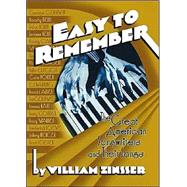| Introduction | 9 | (13) | |||
|
13 | (4) | |||
|
17 | (6) | |||
|
23 | (8) | |||
|
31 | (6) | |||
|
37 | (12) | |||
|
|||||
|
|||||
|
|||||
|
49 | (6) | |||
|
55 | (4) | |||
|
59 | (8) | |||
|
67 | (4) | |||
|
71 | (4) | |||
|
75 | (10) | |||
|
85 | (10) | |||
|
95 | (8) | |||
|
103 | (14) | |||
|
|||||
|
|||||
|
|||||
|
117 | (6) | |||
|
123 | (8) | |||
|
131 | (6) | |||
|
137 | (8) | |||
|
145 | (6) | |||
|
151 | (6) | |||
|
157 | (8) | |||
|
165 | (6) | |||
|
171 | (8) | |||
|
179 | (6) | |||
|
185 | (4) | |||
|
189 | (4) | |||
|
193 | (6) | |||
|
199 | (8) | |||
|
207 | (6) | |||
|
213 | (6) | |||
|
219 | (10) | |||
|
229 | (6) | |||
|
235 | (9) | |||
|
244 | (7) | |||
| Acknowledgments, Sources and Notes | 251 | (12) | |||
| Index of People | 263 | (3) | |||
| Index of Musicals and Movies | 266 | (2) | |||
| Index of Song Titles | 268 | (6) | |||
| Permissions | 274 |








